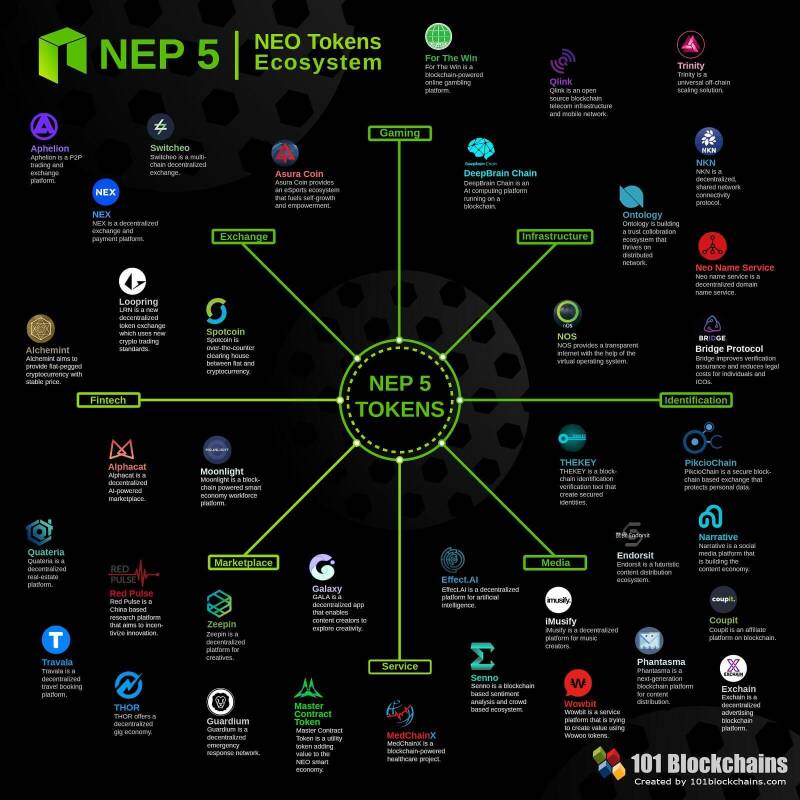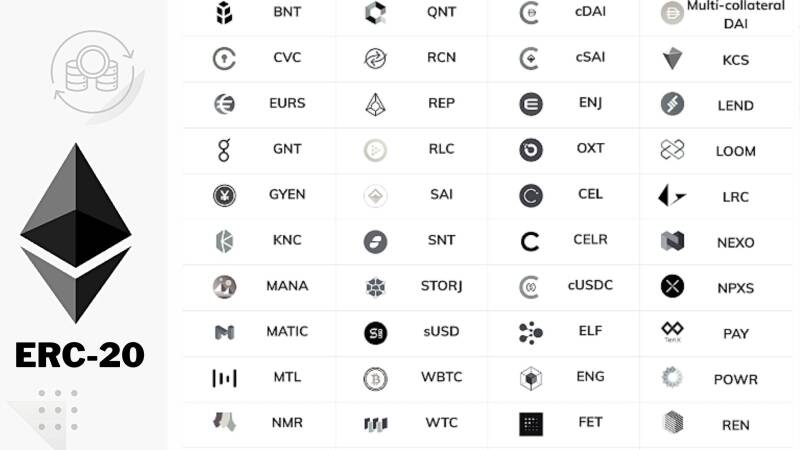
The best known crypto/token in the crypto world today is the ERC-20 token. These ERC-20 tokens are crypto used by projects that use the Ethereum blockchain. One example is Chainlink. Chainlink is an ERC-20 token because the project uses the Ethereum blockchain. In addition to the ERC-20 token, there is also the NEP-5 token. What exactly is a NEP-5 token?
What is a NEP-5 token?
The NEP-5 token is a protocol, consisting of code used on the NEO blockchain. The concept does not differ from the ERC-20 tokens. You can also run projects on the ERC-20 platform. I mentioned Chainlink in the introduction, but there are many other crypto/platforms that are covered by the ERC-20 token. NEO was a response to Ethereum's ERC-20 tokens. NEP stands for NEO Enhancement Protocol. The number (5) stands for the number of revisions of the protocol.
NEO is very similar to Ethereum. NEO wants to become better than ERC-20/Ethereum and in order not to be left behind, NEO wanted to have its own token. The goal is that many platforms/projects/crypto are to be built on their NEO blockchain. Just like Ethereum with ERC-20.
General background: why a protocol?
A protocol is nothing but a set of rules regarding the tokens running on the blockchain. A protocol is an important component for the security of the blockchain and the tokens running on the blockchain. Also, a protocol can ensure that the different crypto can communicate with each other that exist on the blockchain. This allows for more harmony and scalability of the blockchain.
A well-known example of a protocol is the HTTPS protocol. The purpose of HTTPS is that machines can communicate with each other. Specifically, if a person wants to visit an Internet website, HTTPS ensures that you can see that website. In HTTPS, the communication protocol is encrypted using Transport Layer Security or, formerly, Secure Sockets Layer. This allows you to visit a website securely. Often there is also a padlock, which means that the connection is secure. This does not mean that the content of the website is safe.
In HTTPS, the communication protocol is encrypted using Transport Layer Security or, formerly, Secure Sockets Layer.
A good example was the SQUID game rug pull. Anyone could visit the website and the connection was valid and secure. But the content of the website was ultimately put together by scammers.
NEP-5 protocol
The NEO protocol ensures that all platforms are equipped with the right elements and functions so that they can run securely on the NEO blockchain. If this protocol were not there, many applications would not be able to work. The NEP-5 protocol brings certain rules - including security - that the platforms must comply with.
Therefore, it is a prerequisite that any token that wants to run on the NEO blockchain should have a NEP-5 protocol before it can get on the NEO blockchain. If a platform does not want to implement a NEP-5 protocol, then it cannot run on the NEO blockchain. If a platform does implement it, then that project or crypto will be a NEP-5 token.
Why would you want to be a NEP-5 token?
Every token that joins the NEO blockchain by becoming an NEP-5 token makes the NEO network stronger. The more projects that run on the NEO blockchain, the harder the blockchain grows. This is partly because of the number of transaction fees the NEO blockchain can earn. The more crypto that run on the NEO blockchain, the more transactions thus more reward for the miners. This can be an incentive to become a NEP-5 token. More people would then want to use the NEP-5 protocol.
Another incredibly interesting part of NEP-5 is that developers can use easy and common programming languages. For example, think of Java, C# and Kotlin. Developers don't have to learn a new programming language before they want to get started with NEO. The development process is thus faster and more attractive for developers.
NEP-5 vs ERC-20
If you have come this far, then you can already see that NEP-5 is a competitor to ERC-20. In fact, NEP-5 is a response to ERC-20.
The main difference between NEP-5 and ERC-20 is that NEO is currently a lot faster (more scalable) and has lower costs. Ethereum is struggling with high transaction costs. This makes Ethereum less attractive.
ERC-20 tokens are a lot larger. By this I mean that there are many more projects running on ERC-20 than on NEP-5. ERC-20 is probably 2 or 3 times larger than NEP-5. So it's understandable that developers choose ERC-20 because there are already many projects running on ERC-20. But on the other hand, it may also deter developers because the transaction costs are high and the number of users will decrease. This is because users are looking for alternatives. One of the alternatives could be NEP-5.
Another big difference is that with NEP-5, all kinds of common programming languages can be used. That is not possible with Ethereum. With Ethereum, developers have to use Solidity. There is no other alternative. Developers must therefore learn Solidity first. But it turns out that if you already have good knowledge of a programming language, Solidity is easy to learn. But this does not take away from the fact that it can scare developers away. So NEO can potentially attract many more new developers by not prescribing 1 programming language.
ERC-20 and NEP-5 tokens ecosystem
NEO blockchain/NEP-5
NEO was founded as AntShares by Da Hongfei and Erik Zhan in China in 2014 and was rebranded as NEO in June 2017. NEO is also called the Chinese Ethereum and the Chinese government tolerates that NEO can exist. This in turn means that the Chinese government has a major influence on the development of the NEO blockchain. After reading this blog, you know why NEO is called the Chinese Ethereum.
The fact that the Chinese government has a large influence on the ins and outs of NEO may also deter potential developers from being active on the NEO platform. This could slow or even stall the project's growth.




Reactie plaatsen
Reacties